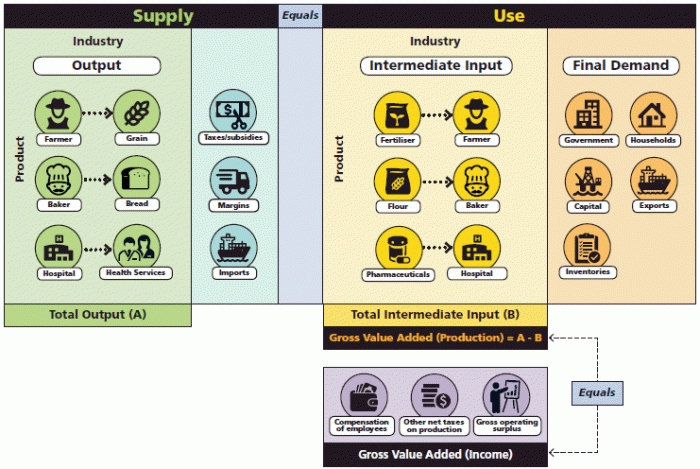This publication contains the supply-use tables for 2017-18. The data in this release is consistent with the 2018-19 release of the Australian System of National Accounts (cat. no. 5204.0).
Supply-use tables are an integral and essential element of the ABS national accounts. They are building blocks for the Australian System of National Accounts as they are used to ensure GDP is balanced for all three approaches (production, expenditure and income) and provide the annual benchmarks (levels) from which the quarterly estimates are compiled. They provide detailed information about the supply and use of products in the Australian economy, and the structure of and interrelationships between Australian industries.
The supply-use time series from 1994-95 to 2017-18 are available through the ABS.Stat website http://stat.data.abs.gov.au.
Rounding
Any discrepancies between totals and sums of components in this publication are due to rounding.
